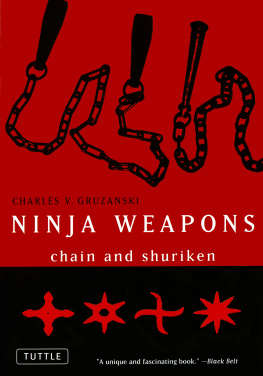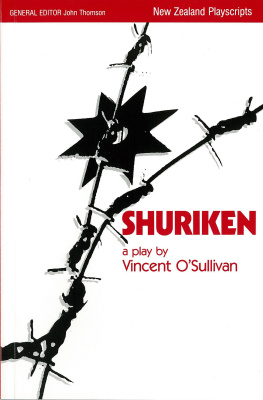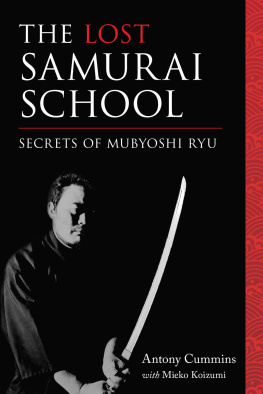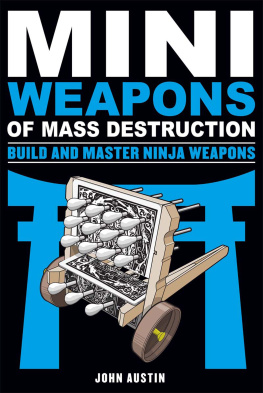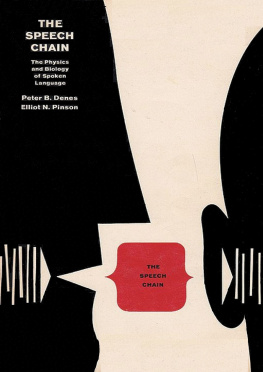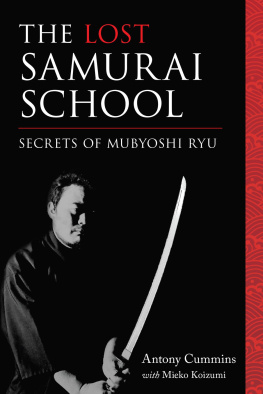Acknowledgments
To the following persons I extend my sincere appreciation for their contributions to the successful compilation of this work.
Mr. YUMIO NAWA and the Yuzankaku Publishing Company, Tokyo, for their kind permission to use excerpts and illustrations from the book, Jutte Hojo-no Kenkyu (The Arresting Rope Study).
Mr. RAY FALK, Globe Photos, Inc., and Argosy Magazine for their kind permission to use photographs from the article "Art of Invisibility" which appeared in the May 1961 issue of Argosy.
Mr. TOM JAWORSKI, for his fine photographs of the techniques that appear herein.
Mr. LUPE MEDINA, for his excellent sketch of the manrikigusari.
Reverend SOYU MATSUOKA, for his excellent translating.
Mrs. ROSE SZCZESNY, for undertaking the task of typing the manuscript.
Mr. HENRY E. SARABIA, for his assistance in demonstrating the techniques.

Bibliography
Nawa, Yumio: Jutte Hojo-Mo Kenkyu (The Jutte Arresting Rope Study), Yuzankaku Publishing Company, Tokyo, Japan, 1964.
Harry K. McEvoy and Charles V. Gruzanski: Knife Throwing as a Modern Sport , Charles C. Thomas, Publisher, Springfield, Illinois, 1965.
Harrison, E. J.: The Fighting Spirit of Japan, Unwin, London, 1913.
History of the Manrikigusari and Masaki-ryu
The Beginning
ACCORDING to the written records of Masaki-ryu , the founder of the manrikigusari and the person chiefly responsible for its development is Dannoshin Toshimitsu Masakione of the most famous and skillful swordsmen of his day.
While assigned as Head Sentry for the main gate of Edo (Tokyo) Castle, it was the responsibility of Masaki and his disciples to guard against the intrusion of bandits, hoodlums, or otherwise insane persons. It was at that time that Masaki became aware and gravely concerned that should an attempt be made to breach the gate, it would certainly result in the heavy flow of blood.
Masaki's convictions dictated that such bloody battles should not take place before such a famous and important gate. He felt that a sword should never be unsheathed at such a sacred place nor should it be soiled with blood, yet the castle gate must be defended at all costs. For some time to follow, Masaki gave considerable thought to what type of weapon would be most appropriate. For reasons known only to himself, he decided that the use of the chain in some form would be most suitable for defending not only against unarmed enemies, but those armed with sticks, swords, and other types of weapons. As a result he constructed many kinds of chain weapons with iron weights attached to themthis was the birth of the manrikigusari. (These events are alleged to have occurred about two hundred years ago.)
Development of the Art
Masaki then taught the techniques of the chain to his disciples and students of the sword, and founded the Masaki-Ryu (or Masaki School). Masaki named his weapon " Manrikigusari" (manriki meaning "10,000-power" and gusari , "chain") because he felt it contained the power and ingenuity of 10,000 persons.
In the time that followed, it was not long before the manrikigusari became famous throughout Japan. People came from all corners of Japan to secure the manrikigusari and to learn its techniques and secrets. Before Masaki presented the manrikigusari to anyone or before he taught its techniques, he always instructed the receiver that the manrikigusari was not meant for unnecessary fighting and that it should be used only for right. Should it be used for wrongdoing, Masaki warned that that person would destroy himself physically and spiritually. Upon presenting the manrikigusari , Masaki is said to have bowed and with a prayer sought to inject a good spirit in it before presenting it to a patron.
The art of manrikigusari was adopted at the Ogaki Samurai Headquarters (Ogaki City, Gifu Prefecture) soon after. At that time an ancestor of Yumio Nawa (author of Jutte Hojo-No Kenkyu cited in the Acknowledgment) was Superintendent and Administer of Justice for Samurai. The art then descended to him from his grandfather.
For many years the manrikigusari was taught in the Ogaki High School as a part of its regular curriculum just as judo, kendo, and other martial arts are taught in schools throughout Japan today. But, because of its misuse by some of the students at that time, the course was discontinued. Today at Ogaki Castle there are approximately 15 manrikigusari displayed with a complete history, which is all that remains of this dying and almost extinct art.
Other Schools of the Manrikigusari
From Masaki-ryu there grew many different ryu (or schools) of the chain throughout Japan. Today in Japan there is said to be only about 20 that remain. Some of these are: Hoen-ryu, Toda-ryu, Shuchin-ryu, Kyoshin-Meichi-ryu, Shindo-ryu , and Hikida-ryu. The basic difference in some of these ryu as compared to Masaki-ryu is the length of the chain, the shape of the weights attached to the chain, and the techniques used.
The manrikigusari is also sometimes referred to as kusari-bundo, ryo-bundo, sode-kusari, kusari, tama-kusari, and kusari-jutte.
Samurai who once carried the manrikigusari are said to have afforded it with as much respect and care as their sword. The manrikigusari was carried by the samurai in many ways. But, when not being carried or in use, it was placed by the samurai on a small plate beside his most frequent sitting place, so that it would be near at hand. When the samurai left home, he usually carried it in his sash.
Special Characteristics of the Manrikigusari
General Features
THE MANRIKIGUSARI as it was originally designed by Masaki is said to have had the following characteristics: an iron chain varying in length from one to three feet. At each end of the chain there were small iron weights attached (Fig. 3). These weights were usually of rectangular shape and about two inches long. Although the length of the chain varied, the average length of the manrikigusari was about two feet long. Weights of other sizes and shapes were also known to have been used, such as round, octagonal, hexagonal, etc., and were usually employed by other ryu (Fig. 4).
The manrikigusari is a weapon of defense. It was, and still is, considered one of the most powerful protective weapons among those interesting instruments which are very useful even in contemporary society. It is a perfect weapon for self-defense because of its small size. Truly, if used properly the manrikigusari contains the "power and ingenuity of 10,000 persons." It can be used against an attacker's fists or feet, against an opponent armed with a knife, pistol, stick, or sword. The probability of winning under such circumstances is greatly enhanced with the use of the manrikigusari.
Advantages to Using the Manrikigusari
There is no disadvantage to using the manrikigusari in a small room, on a narrow street, along a passageway, or in a public conveyance. In fact, there are many advantages to it. In addition, any one who has knowledge of judo, jujutsu, aikido, karate, or kendo techniques can use the manrikigusari as an additional instrument or technique, thereby increasing their effectiveness at self-defense.

